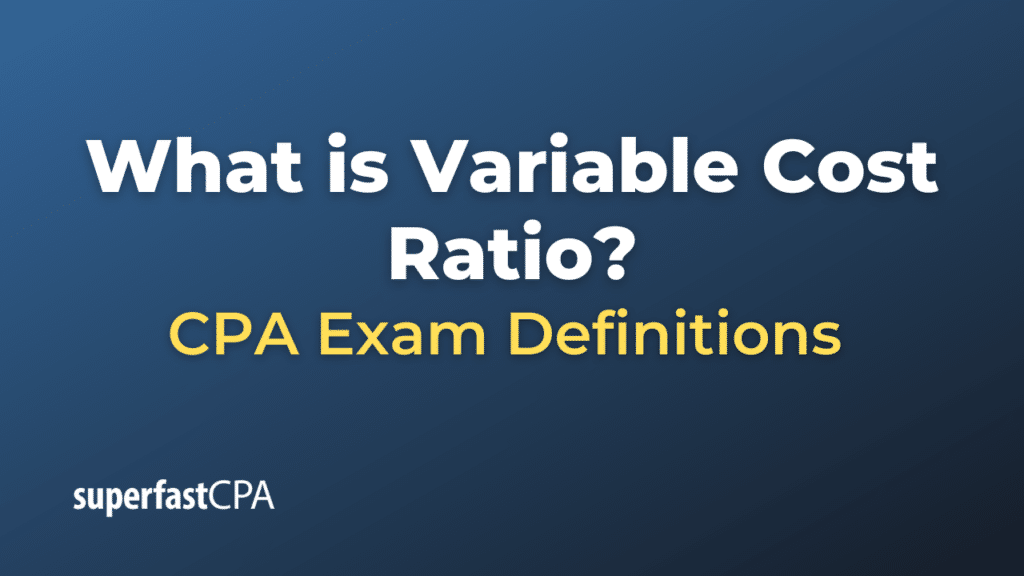Variable Cost Ratio
The Variable Cost Ratio, also known as the Variable Expense Ratio or Contribution Margin Ratio, is a financial metric that expresses the variable costs of producing a product as a percentage of sales revenue. It helps to gauge the cost behavior of a business and its efficiency in production and operations. This ratio is particularly useful in evaluating how much room a business has to cover its fixed costs and generate profit after variable costs have been paid.
Formula:
The formula for Variable Cost Ratio is:
Variable Cost Ratio = Total Variable Costs / Total Sales Revenue × 100
Alternatively, it can also be calculated using per-unit costs and selling prices:
Variable Cost Ratio = Variable Cost per Unit / Selling Price per Unit × 100
Interpretation:
- A lower Variable Cost Ratio is generally favorable as it indicates that a higher portion of revenue is left over to cover fixed costs and generate profit.
- A higher ratio may signal inefficiencies in production or suggest that the company is operating in a competitive market where it’s difficult to pass on costs to consumers.
Example of Variable Cost Ratio
Let’s use a fictional example of a company named “CycleCraft” that manufactures bicycles to explain the concept of Variable Cost Ratio.
Business Context:
CycleCraft specializes in producing mountain bikes. The variable costs associated with producing each bike include the cost of materials like metal, rubber, and paint, as well as labor costs for assembly.
Pricing and Costs:
- Selling Price per Bike: $500
- Variable Cost per Bike: $200
Variable Cost Ratio Calculation:
To calculate the Variable Cost Ratio, we use the formula:
Variable Cost Ratio = Variable Cost per Unit / Selling Price per Unit × 100
Plugging in the numbers, we get:
Variable Cost Ratio = 200 / 500 × 100
Variable Cost Ratio = 0.4 × 100
Variable Cost Ratio = 40%
Interpretation and Business Implications:
- The Variable Cost Ratio of 40% indicates that 40% of the sales revenue from each bike goes toward covering the variable costs of production.
- The remaining 60% (known as the contribution margin) is available to cover fixed costs (like rent, utilities, and salaried staff) and contribute to the company’s profit.
- If CycleCraft wants to increase its profits or lower its break-even point, it could aim to reduce this ratio by decreasing variable costs. For instance, they might negotiate better terms with suppliers or find more efficient production techniques.
- Conversely, if the company plans to launch a sales promotion by offering discounts, understanding the Variable Cost Ratio can help them set the lower limit on pricing so as to not incur losses on each unit sold.
Understanding the Variable Cost Ratio allows CycleCraft to make informed decisions related to pricing, promotions, cost control, and overall profitability.













